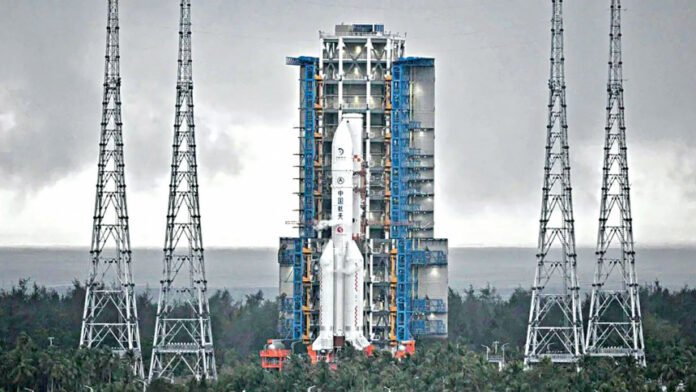China’s Chang’e-6 lunar probe successfully landed on the far side of the Moon yesterday to collect samples, state media reported — the latest leap for Beijing’s decades-old space programme.
The Chang’e-6 set down in the immense South Pole-Aitken Basin, one of the largest known impact craters in the solar system, state news agency Xinhua said, citing the China National Space Administration.
It marks the first time that samples will be collected from the rarely explored area of the Moon, according to the agency. The Chang’e-6 is on a technically complex 53-day mission that began on May 3.
Yesterday, it descended from its orbit about 200 kilometres above the Moon to scour the surface for a landing site, Huang Wu, an official at the China Aerospace Science and Technology Corporation, told state broadcaster CCTV.
“The (descent to a lower) orbit carried a few risks, so we needed precise control procedures to put (the probe) onto its preset trajectory,” Huang said.
After that, “we had to rapidly reduce the probe’s relative speed to the Moon… to zero within 15 minutes, requiring a huge amount of propellant, basically half the probe’s entire weight,” he said.
Now that the probe has landed, it will attempt to scoop up lunar soil and rocks and carry out other experiments in the landing zone.














